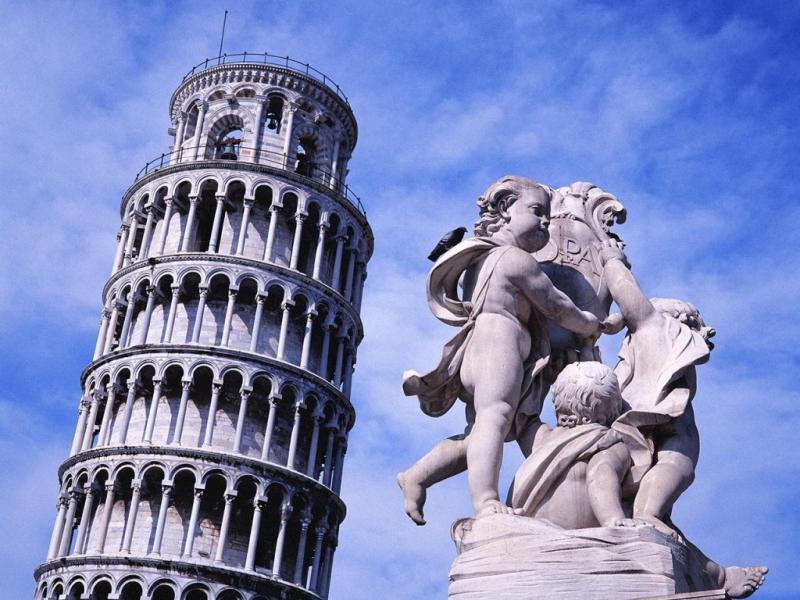神秘内容 Loading...
 (来源:英语杂志 http://www.EnglishCN.com) (来源:英语杂志 http://www.EnglishCN.com)
Engineers who toiled for more than a decade to stabilize the leaning Tower of Pisa are standing tall.
Today they are set to finish peeling away the last of two sets of steel suspenders supporting Italy's famous monument.
The cables were secured in 1998 as part of a bold, apparently successful plan to straighten the tower. Some had feared the icon of Italian culture might begin to slip as workers excavated the soil under its foundation.
'Extraordinarily Close' to Collapse
Although the Tower of Pisa has always leaned since its construction began in 1173, the most severe threat to its stability did not come until the 19th century. By adding a walkway close to the monument, engineers unintentionally shifted the soil underneath the tower.
This seemingly harmless act gradually caused the lean to worsen by several inches. The Italian government formed a commission to find a way to prevent any further slide.
"It's not often widely appreciated that the tower was literally on the point of falling over," says John Burland, a professor of soil mechanics at London's Imperial College who worked on the project. "Anything we did was extremely delicate."
But throughout the repair process, the tower proved strong enough to stand on its own. Or to be more precise, Burland points out, the tower's foundation was solid enough to hold up against the strain of the latest modifications, thanks to some grouting work done in the 1930s.
The steel suspenders were attached to giant winches buried 100 yards into the ground in case the tower slid further. In the end they were never needed.
Timeline of the Tower
1173: Construction begins on the Tower of Pisa. Evidence suggests the tower began to lean soon after, but historians discount theories that the original architects intended for the tower to lean.
1185: Experts believe construction was interrupted at the fourth order, or level, of the tower.
Construction probably resumed in 1231, only to be suspended again in 1292.
1360: Tommaso Pisano completes the tower, adding a belfry and making other minor corrections.
Late 1830s: Nearby excavation work begins to destabilize the tower's base.
1990: Italian government closes tower to tourists over fears it is leaning too far.
June 6, 2001: Official inauguration ceremony for the leaning Tower of Pisa .
November 2001: The Tower is set to reopen to tourists and climbers for $12 admission. Guides will lead groups of 30 at time.
Beyond 2300: Next time engineers believe the tower will need a major overhaul.
A Big Sigh of Relief
"It's a little like running a marathon," Burland says of saving the tower. "You're concentrating so hard that before you know it you're crossing the finishing line."
Burland acknowledges the nature of the project put an extraordinary amount of pressure on him and his colleagues.
Tourists are more likely to notice they will be able to climb the monument for the first time in a decade than the 16-inch difference in the tower's lean.
The official reopening ceremony is scheduled for June 16, with the first guided tours planned for November.
The Delicate Task of Fixing an Age-Old Icon
May 16 — Rome wasn't built in a day. Years of calculations and tests by Professor John Burland and his colleagues predated the successful efforts to bring the Tower of Pisa back to a safe lean.
Burland says the team approached the tower from the edge of its "high side," or the section opposite the lean. The supports workers are removing today were designed to hold the monument in place, and not to pull it back to a proper alignment.
"The history of the tower is littered with the unexpected," Burland notes. "We had to have a safeguard in case something went wrong."
Once the structure was secure, engineers started to pump grout — a mixture of gravel and cement — below the tower.
Burland and another team used a similar process at London's Big Ben clock tower when work on the London Underground threatened to crack the structure. |

